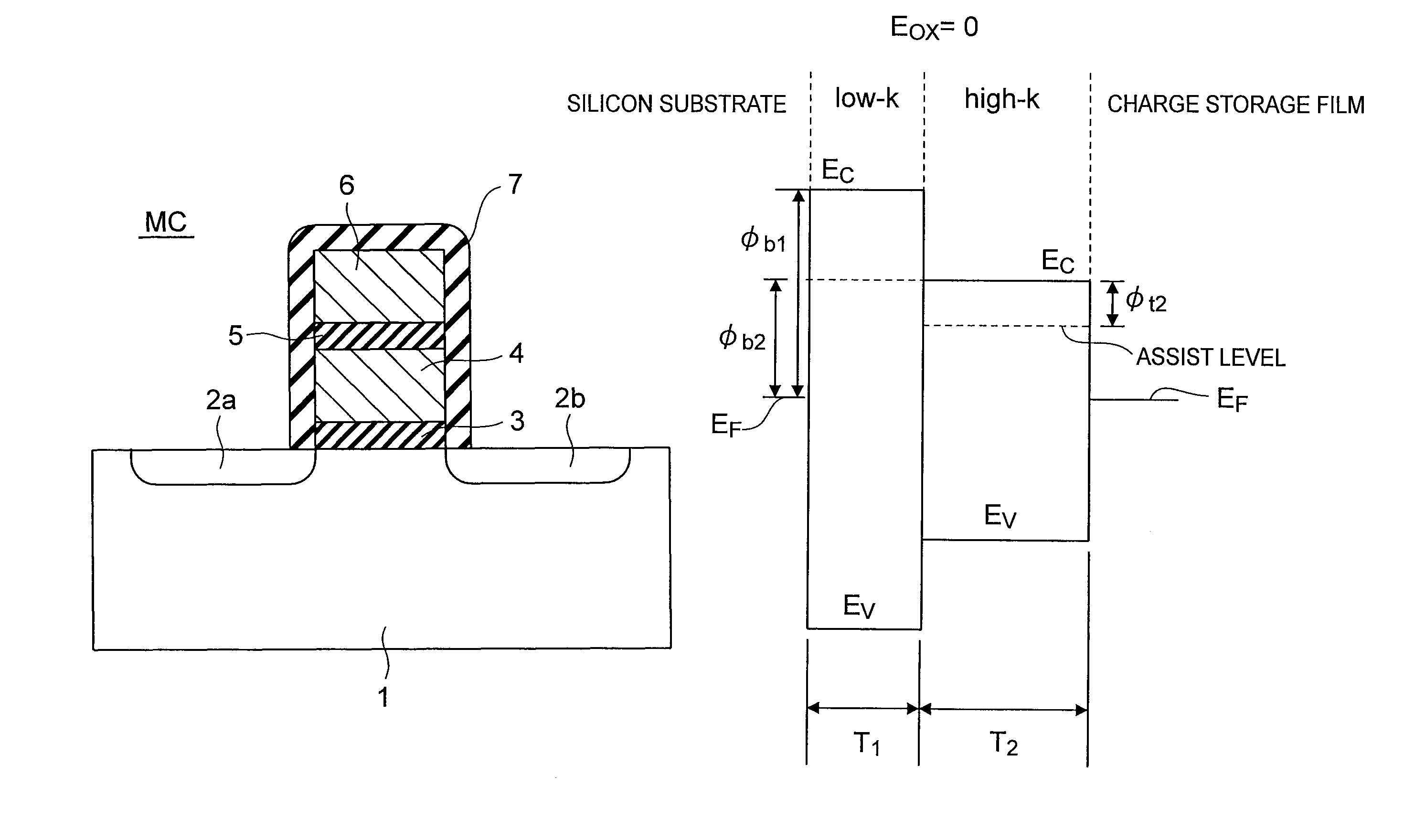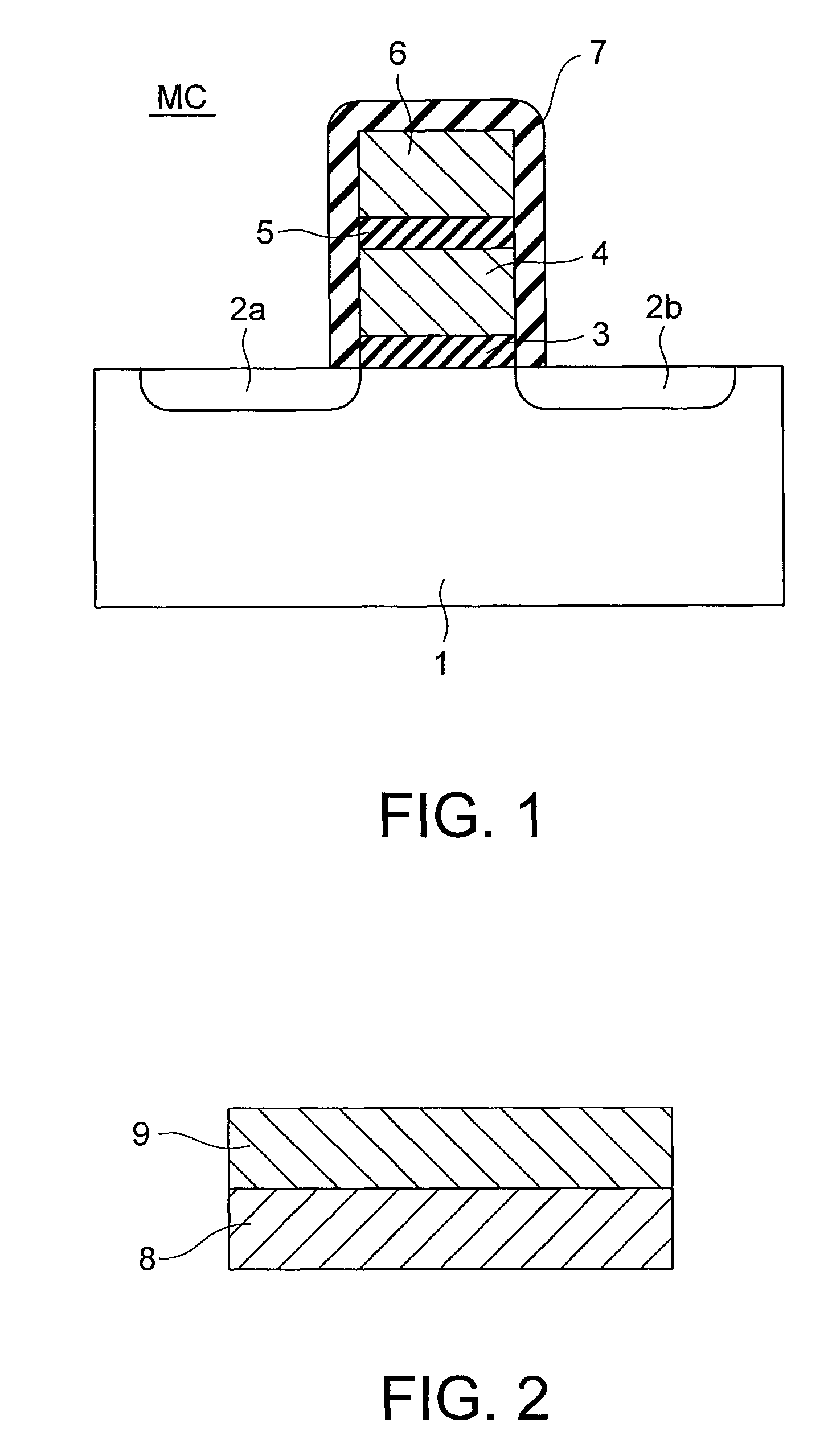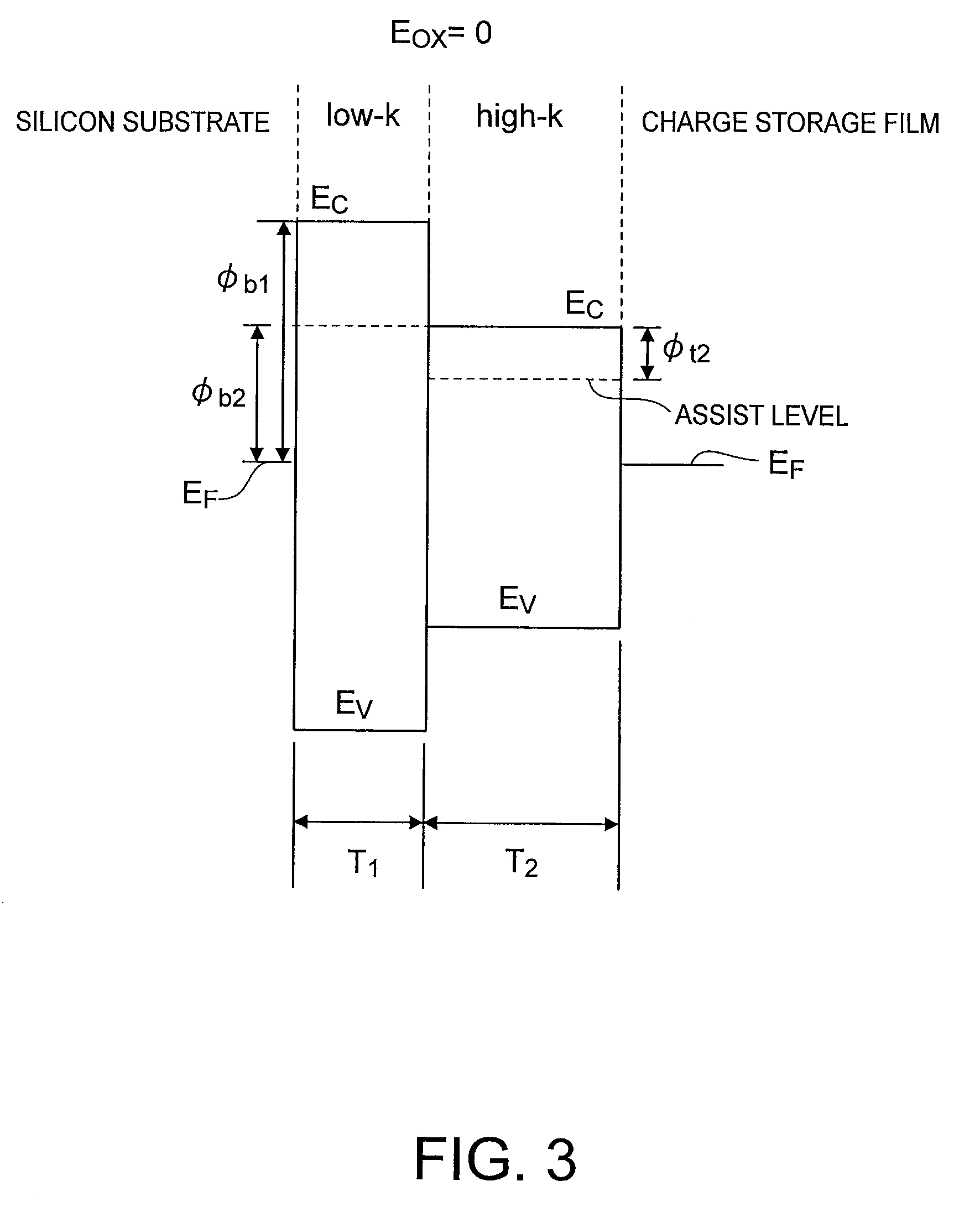Nonvolatile semiconductor memory apparatus
a semiconductor memory and non-volatile technology, applied in the direction of electrical equipment, semiconductor devices, basic electric elements, etc., can solve the problems of adverse effects on the reliability of the tunnel insulating film, unsuitable, and high voltage, and achieve the effect of restricting the leakage current and increasing the leakage curren
- Summary
- Abstract
- Description
- Claims
- Application Information
AI Technical Summary
Benefits of technology
Problems solved by technology
Method used
Image
Examples
first embodiment
[0077]A nonvolatile semiconductor memory apparatus in accordance with a first embodiment of the present invention has NAND cell units arranged in a matrix form, for example. Each of the NAND cell units includes a NAND cell that is formed with memory cells connected in series. As shown in FIG. 1, each memory cell MC has n-type source and drain regions 2a and 2b that are formed at a distance from each other in a p-type Si substrate 1 and contain n-type impurities (such as P and As). A tunnel insulating film 3 is formed on the portion of the Si substrate 1 located between the source region 2a and the drain region 2b. A charge storage film 4 is formed on the tunnel insulating film 3, and an interelectrode insulating film 5 is formed on the charge storage film 4. A control gate electrode 6 is formed on the interelectrode insulating film 5. The gate of the stacked structure formed with the control gate electrode 6, the interelectrode insulating film 5, the charge storage film 4, and the t...
second embodiment
[0112]Next, a nonvolatile semiconductor memory apparatus in accordance with a second embodiment of the present invention is described. In the nonvolatile semiconductor memory apparatus of the first embodiment, the tunnel insulating film has the assist level formed only in the high-k layer. In the nonvolatile semiconductor memory apparatus of this embodiment, on the other hand, the tunnel insulating film has the assist level not only in the high-k layer but also in the low-k layer. The nonvolatile semiconductor memory apparatus of the second embodiment has the same structure as the nonvolatile semiconductor memory apparatus of the first embodiment, except for the tunnel insulating film.
[0113]FIG. 12 is an energy band diagram of the tunnel insulating film of this embodiment observed when the electric field Eox is 0, with the assist level φt1 being added to the low-k layer shown in FIG. 3. FIGS. 13A and 13B schematically show the energy band observed in a case where a low electric fiel...
third embodiment
[0167]Referring now to FIGS. 51A to 52D, a method for manufacturing a FG-type nonvolatile memory in accordance with a third embodiment of the present invention is described. FIGS. 51A, 51C, 51E, 52A, and 52C are cross-sectional views that are orthogonal to the cross-sectional views of FIGS. 51B, 51D, 51F, 52B, and 52D, respectively.
[0168]First, as shown in FIGS. 51A and 51B, a tunnel insulating film 22 having the assist level described in the foregoing embodiments is formed on the surface of a p-type silicon substrate 1 that is doped with desired impurities. For example, after a SiO2 layer is formed by oxidizing the surface through combustion oxidation with the use of hydrogen and oxygen at 750° C., a HfO2 layer having Ge added thereto is formed by CVD (chemical vapor deposition), so as to obtain a tunnel insulating film having the assist level. A 60 nm thick phosphorus-doped crystalline silicon layer 23 to be the floating gate electrode is deposited by CVD. A mask member 24 formed ...
PUM
 Login to View More
Login to View More Abstract
Description
Claims
Application Information
 Login to View More
Login to View More - R&D
- Intellectual Property
- Life Sciences
- Materials
- Tech Scout
- Unparalleled Data Quality
- Higher Quality Content
- 60% Fewer Hallucinations
Browse by: Latest US Patents, China's latest patents, Technical Efficacy Thesaurus, Application Domain, Technology Topic, Popular Technical Reports.
© 2025 PatSnap. All rights reserved.Legal|Privacy policy|Modern Slavery Act Transparency Statement|Sitemap|About US| Contact US: help@patsnap.com



